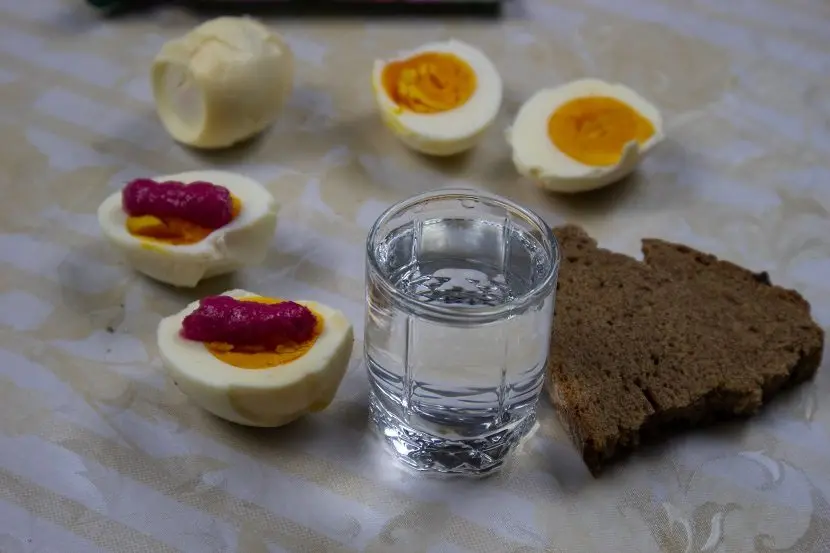Due to the high cost, fructose and glucose are not traditional raw materials for home brewing. But if these substances are available in large quantities, for example, there are expired ones, they can be put into moonshine. As a result, you get the same distillate as from ordinary sugar – without taste and aroma, which can be drunk in its pure form or used as an alcoholic base for tinctures.
Theory
Yeast converts 4 substances into alcohol: sucrose (ordinary sugar), maltose (sugar obtained by splitting starch in grain under the influence of enzymes, is two glucose residues), fructose and glucose. One sucrose molecule consists of two equal molecules of fructose and glucose. Also, glucose and sucrose in large enough quantities contain berries, fruits and honey. In turn, glucose is sold in the form of an aqueous solution of a certain percentage (usually 5%, 10%, 25% and 40%) or powder. In the language of moonshiners, glucose in powder form is called dextrose. The difference between these two substances is only in concentration.

The theoretical yield of alcohol from glucose and fructose is the same – 0,647 liters from 1 kg of raw materials, and 1 kg of sucrose or maltose gives up to 0,681 liters of alcohol. The practical yield is usually always lower than the theoretical one by 10-15%. This means that ceteris paribus, sucrose or maltose produces 5% more moonshine than glucose and dextrose.
At the same time, the sweetness of the substance is not directly related to the yield of alcohol, since yeast requires carbohydrates. For example, a synthetic substitute for cyclamate is 30-50 times sweeter than sugar, but yeast does not process it. Moonshine is not made from artificial sweeteners.
The hydromodulus of any mash depends on the density of the constituent substances. The density of sucrose is 1587 g/l, maltose is 1540 g/l, glucose is 1540 g/l, fructose is 1600 g/l. The spread is small, so the standard ratio of 1 to 4 (one part raw material to four parts water) works in every situation.
Since there are no substances responsible for aroma and taste in mash, fructose (glucose) moonshine will not differ from ordinary sugar moonshine in terms of organoleptic properties, so it is not advisable to use wine yeast, baking or alcohol ones are suitable. Under the same conditions, the fermentation time is approximately equal, fructose mash will be ready 1-2 days faster.
If, when comparing moonshine from glucose (fructose, dextrose) and sugar, there are still differences in organoleptic properties, it means that somewhere low-quality raw materials were used to make home brew, the impurities of which caused a deterioration in taste or aroma.
Ingredients:
- fructose (glucose, dextrose) – 5 kg;
- water – 20 liters;
- yeast – 100 grams dry or 500 grams pressed.
Recipe for mash from glucose (fructose)
1. Dissolve dextrose (fructose, glucose) in water. You can simply mix the ingredients, but to speed up the process, it is better to preheat the water to 35-37 ° C, add the substance and mix until completely dissolved. Pour the resulting solution into a fermentation tank, filling a maximum of 75% of the volume.
2. When the temperature of the wort is below 30°C, add the pre-diluted yeast according to the instructions on the label. Mix.
3. Install a water seal of any design on the container, you can use a medical glove with a pierced hole in one of the fingers.

4. Leave the container in a dark room (or cover with a thick cloth) at a temperature of 18-27 ° C until the end of fermentation. Depending on temperature and yeast, the process takes an average of 5-10 days.
Obtaining moonshine from glucose (fructose)
5. Drain the mash that has won back from the sediment into the cube of the moonshine still. Distill for the first time without crushing into fractions. Finish selection when the strength in the jet falls below 30%.
6. Determine the amount of pure alcohol (multiply the volume of distillate obtained in liters by the percentage of strength and divide by 100).
7. Dilute moonshine with water up to 18-20%, optionally clean with coal or other methods, then make a second distillation. The first 8-12% of the yield of pure alcohol (until an unpleasant odor is felt) is collected separately. This is a harmful fraction (“head”), which can only be used for technical purposes.
8. Collect the main product (“body”) until the strength in the stream drops below 45%, then finish the distillation or take the rest (“tail”) into a separate container.
9. Dilute the finished moonshine (“body”) with water to the desired strength – usually 40-45%, pour into glass storage containers, close tightly and leave for at least 2-3 days to stabilize the taste.










